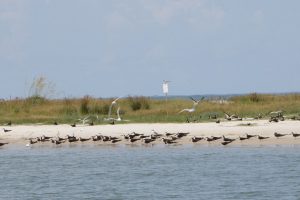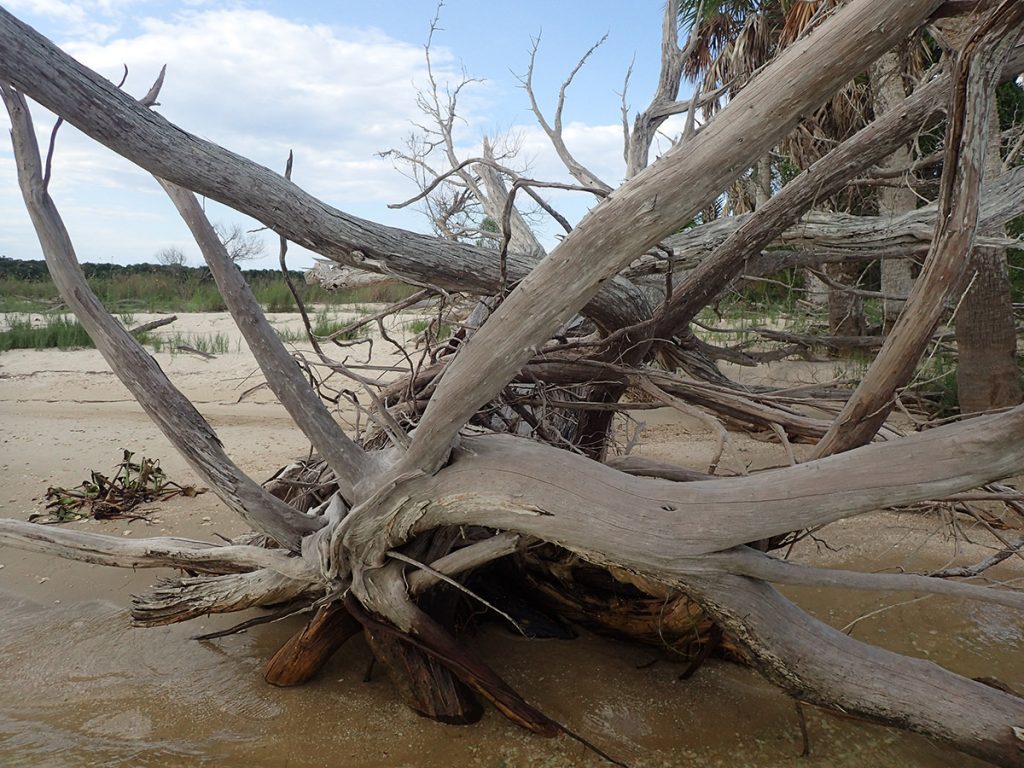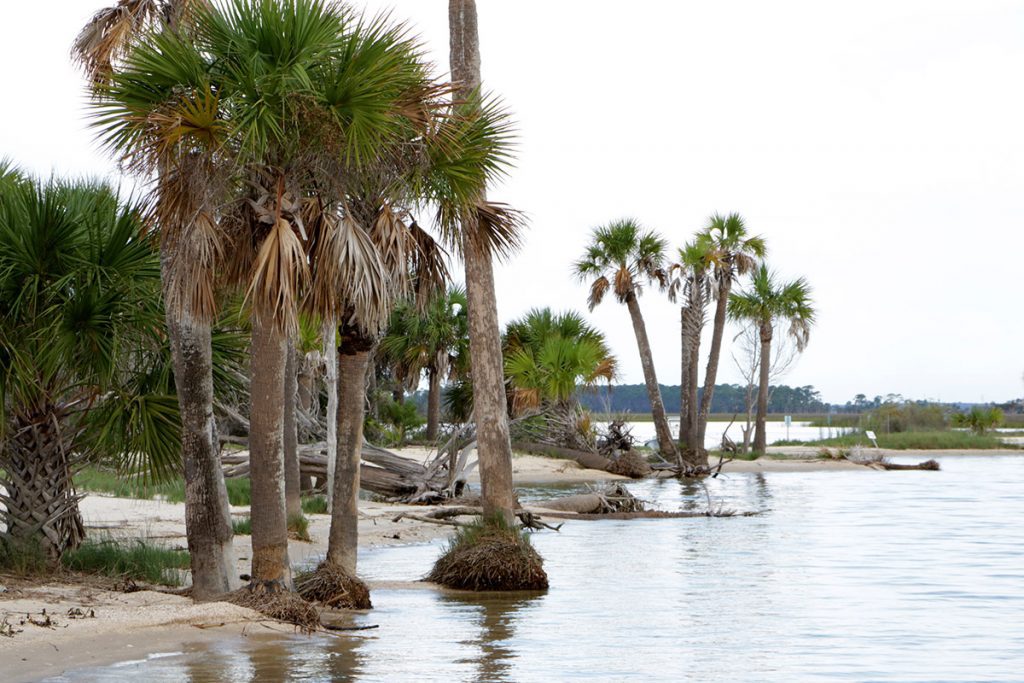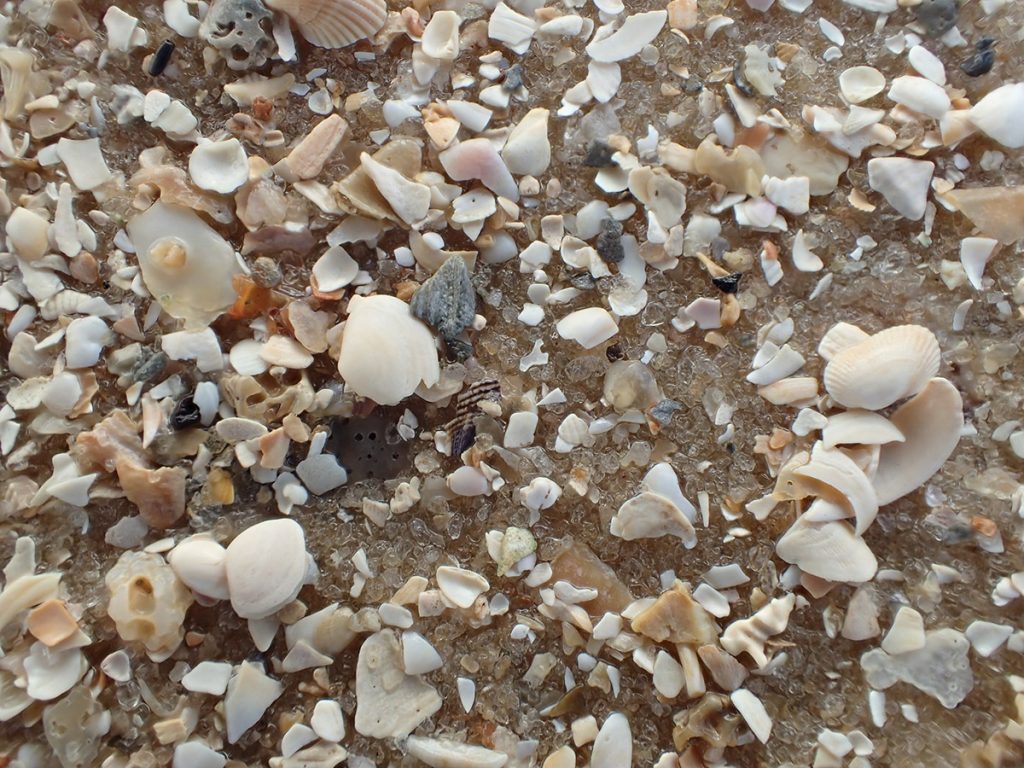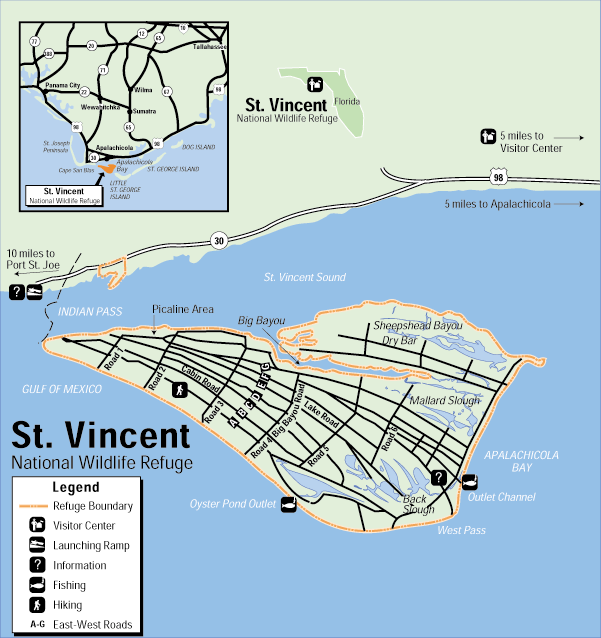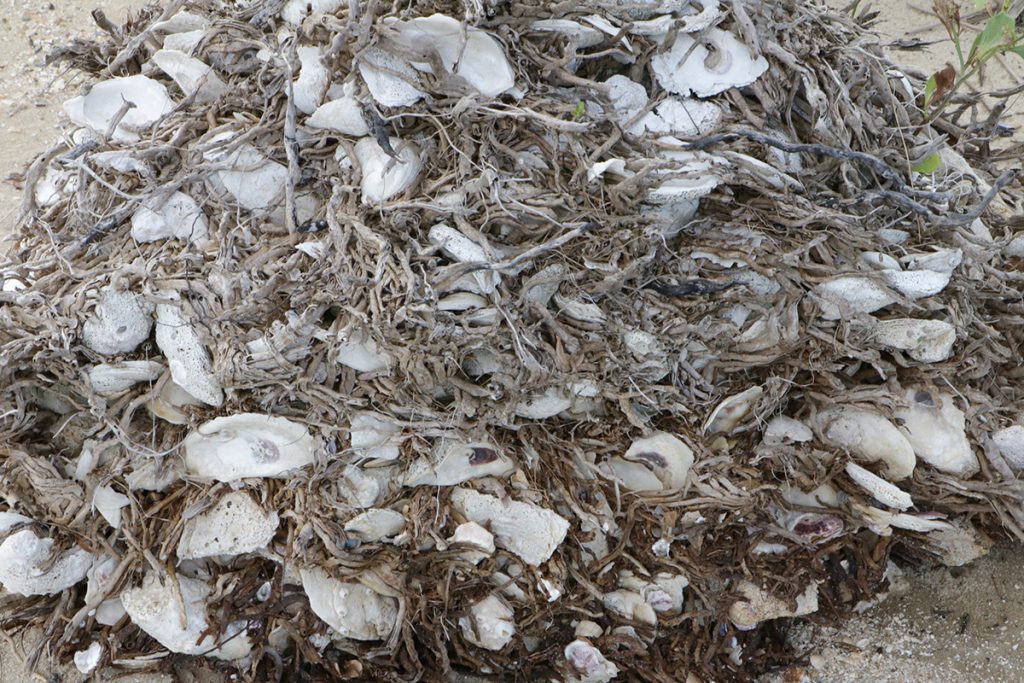We journey to one of the most remote places in the WFSU viewing area: Saint Vincent Island. Our hosts are author Susan Cerulean and Florida State University oceanographer Dr. Jeff Chanton. They shared their respective artistic and scientific perspectives of this stunning barrier island.
In the video, you’ll hear a song titled St. Vincent Island, which was written and performed by Velma Frye and Becky Reardon.
Rob Diaz de Villegas WFSU-TV
After we visited Saint Vincent Island, Jeff and Susan drove me out to a strip of sand called Flagg Island. A popular nesting site for shore birds, the 25 acre sand bar has been proposed as a Critical Wildlife Area. This designation would prohibit people from getting within a certain distance of the island, letting the birds do their thing.
As we eat our lunch and listen to terns and black skimmers socialize, Susan says “To think, Saint Vincent Island started out just like this.”
Susan Cerulean’s fascination with Saint Vincent, and its creation, is what brings me out today. Saint Vincent Island, St. George Island, Dog Island, and Cape San Blas were all once sand bars like Flagg Island. This was after the ice ages ended and sea level stopped rising, about three or four thousand years ago. Sediments stripped from the Appalachian Mountains were carried down the Apalachicola River. Over hundreds of years, the islands grew and created an enclosed Apalachicola Bay.
But just as sea level rise helped create the islands, it is now slowly eating away at them. Susan’s love and concern for these places led her to write her book Coming to Pass. It’s a love and concern she shares with her husband, Florida State University oceanographer Dr. Jeff Chanton.
Susan chose to celebrate her love of the island in prose. Jeff wants to study what’s happening to the island. Though Saint Vincent Island has become a part of their professional lives, their connection to it remains a family affair.
The Vanishing of St. Vincent Island
“We first started coming out here about twenty years ago, for recreation, with our kids,” Susan recalls. “We would camp at Indian Pass, and they learned to kayak across the pass. And we would come out in a motor boat and just explore around.”
Once the kids had grown, Susan and Jeff became curious about the island. You can see in the video how the shoreline has moved past terrestrial trees, leaving a wreckage of eery logs along the beach. To be honest, they look kind of cool. The camera loves their tangle of upturned roots, and the extreme angles at which palm trees slowly dive into the water. Climbing over them gives the feel of walking a wild beach.
But they are symbols of a shrinking island.
As Jeff says, it’s natural for barrier islands to have their coastlines erode in places, and to add new land mass in others (a process known as accretion). “But we think that this barrier island is experiencing much more area of erosion than it is accretion.” Right now, Jeff’s suspicions are based on observation. Hiking along the shore, it’s easy to see why he thinks that.
But observations can only tell you so much. So Jeff is putting together a proposal to the National Science Foundation. He wants to put some numbers to what he sees.
Of course, NSF grants typically come in three year increments, and the full effects of sea level rise might take generations to see. Luckily, the equipment he needs would be a one time purchase.
“If you could get it all set up and get the equipment you needed,” Jeff says, “They would support you for three years. And you could carry out a long term study on your own, for a lifetime.”
Origins | The Ridges of Saint Vincent Island
Our first stop on the day was to a small sand bar which formed a small bay on the island. “Along this back side of the island,” Susan said, “Are the oldest beach ridges. This is the first formation of the island.”
We stood on the bay side of the island, facing the mouth of the Apalachicola River. Saint Vincent Island grew in a series of ridges, outward and away from the bay. The oldest ridges are closer to Apalachicola Bay, the youngest by the Gulf of Mexico.
Had we visited during a cooler, less bug infested time of year, we would have explored the island interior. We’ll save that for another trip.
From above, it looks like Saint Vincent Island has had its hair tied back. You can see several larger sets of ridges, but bundled within those are several smaller ridges. Knowing the island’s origins, you can kind of imagine the island expanding, ridge by ridge, over the centuries. As Susan explains in Coming to Pass, each ridge took about 80 or 90 years to form.
The Appalachian sands that formed the island now accumulate behind dams in the Apalachicola/ Chattahoochee/ Flint river basin. “All those dams are going to impound the sand that runs down the rivers and makes up these barrier islands.” Jeff says. “So they become sediment starved, or sand starved.”
Barrier islands gain and lose sand from their beaches- these are natural processes. Between sea level rise and the dams of the ACF basin, the island is losing more than it’s gaining. “I would say that 70-80% of this island is eroding,” Jeff says. “And that accretion is restricted to just a few parts, 20-30%”
A Refuge for Migratory Birds, Sea Turtles, and Red Wolves (Oh My!)
If Jeff gets his funding, he’ll better know where the island is eroding the fastest. This knowledge might help the island’s managers make decisions affecting the many species that call Saint Vincent home- even if only temporarily.
Saint Vincent Island is a National Wildlife Refuge, created as sanctuary for migratory birds. Coastal habitats are a crucial stopping point for birds flying between South and North America. And, they’re critical for species like piping plovers and ruddy turnstones, who winter on our coasts.
Since the Refuge was established in 1968, it has taken on some new roles as well. For one, its miles of undeveloped beaches make it an ideal nesting site for sea turtles. Susan and Jeff took me to a loggerhead turtle nest, where we caught up with Refuge Manager John Stark. He was ecstatic about the number of loggerhead nests this year.
“The previous record for loggerhead sea turtle nests was 104,” He said, “and we had our 110th nest this morning. So this is a record year.”
We shot the video in July, before the end of sea turtle nesting season. All told, the island hosted 127 loggerhead nests. That’s the good news. However, while rebar cages protect the nests from predators like raccoons, they’re not much help against storm surge.
Refuge biologists haven’t yet totaled the number of nests affected by Hurricane Hermine. Despite the record number of nests, they estimate that there were an average number of crawls.
There is a silver lining. Saint Vincent was able to have an average number of crawls after a major storm event. Hurricanes are natural phenomena, and a fact of coastal life. And yet, these turtles had a rare undeveloped Florida Beach on which to lay their eggs.
The Red Wolf Recovery Program
Sea turtles and shore birds aren’t the only ones making babies on the island. Saint Vincent Island is a red wolf propagation site in the US Fish and Wildlife Service’s Red Wolf Recovery Program. Two adults wolves, one male and one female, are set loose on the island. It’s up to them to find each other on the 12,500 acre refuge. There are no guarantees that they’ll mate.
After four unsuccessful years on the island together, in 2013 the island’s two adults were replaced. Would the new pair be more successful?
This photo was taken in July of 2016 by US Fish and Wildlife’s John Murphy. Red wolves born as part of the recovery program stay with their parents for 18 months. After that, the pup is trapped and brought to Alligator River NWR in North Carolina. There, it joins the only wild population of Red Wolves.
The red wolf (Canis rufus) is an endangered species.
Visiting Saint Vincent Island
If you’re visiting Saint Vincent Island, you’ll need a boat. The closest access point is Indian Pass, from where you can kayak or motorboat. While you can’t camp on Saint Vincent Island, you can camp at Indian Pass. You can also depart from Apalachicola.
Aside from Refuge staff and volunteers, the use of motorized vehicles is prohibited. As I read in Coming to Pass, though, you can bike to your heart’s content. The island ridges sport dirt roads, bisected by an additional six roads.
In the video, you can see a man casting a net offshore from the island. Fishing is popular on the island, as is hunting.
Saint Vincent Island hosts three hunts, all of which occur in the coming months. The most unusual game animal on the island is the sambar deer. This Himalayan import is a remnant of a private zoo housed on the island before it became public land. Other game animals include white tailed deer, hogs, and raccoons.
The next hunt is an archery hunt, which takes place from November 17-19.
Maybe you hunt, fish, or cycle. Perhaps you like to bird watch. To me, the greatest thing about Saint Vincent Island is that you can just explore. It’s a big, natural place where you won’t run into a lot of people. It’s the kind of place where you can return and always see something new.
An Anthem for Saint Vincent Island
I got lucky when I went to edit this video. Within a day of our shoot, Susan Cerulean sent me an audio file titled “St. Vincent Song.” It’s not often I get to use a song written specifically about a place we visit, and so this song was a blessing.
The song comes from Susan’s musical ally, Velma Frye, who teamed with New Mexico composer and singer Becky Reardon to write it. You might remember our first EcoAdventure with Susan, wandering the beach and bird watching at Bald Point, featured a couple of Velma’s songs. This time, Susan had a hand in creating a new song for a place she treasures.
She and Jeff took the songwriters to the island, and showed them around as they did with me. “We learned so much that there were way too many verses,” Velma told me, “and we had to cut it down to only four verses (which Susan hated!).”
Velma and Becky then collaborated long distance. “Then Becky went home to Taos, New Mexico and I came to Tallahassee and we continued to polish it, via Skype, for a few weeks. Becky recorded the guitar part and her vocal lines from her home studio and sent them here to Winterstone Sound, where David Murphy recorded my vocal lines and mixed all three parts.”
The version we used was a demo, with Velma singing and playing a finger piano called an mbira. The full version of Saint Vincent Island has guitar and vocals from both singers. Susan has a more in depth account of the songwriting process on her own blog.
The cool thing about the song is that Velma and Becky have made the sheet music available for anyone who wants to record the song. If you do record this song, let me know! Leave a comment on this blog, or write the e-mail at the top of the page.
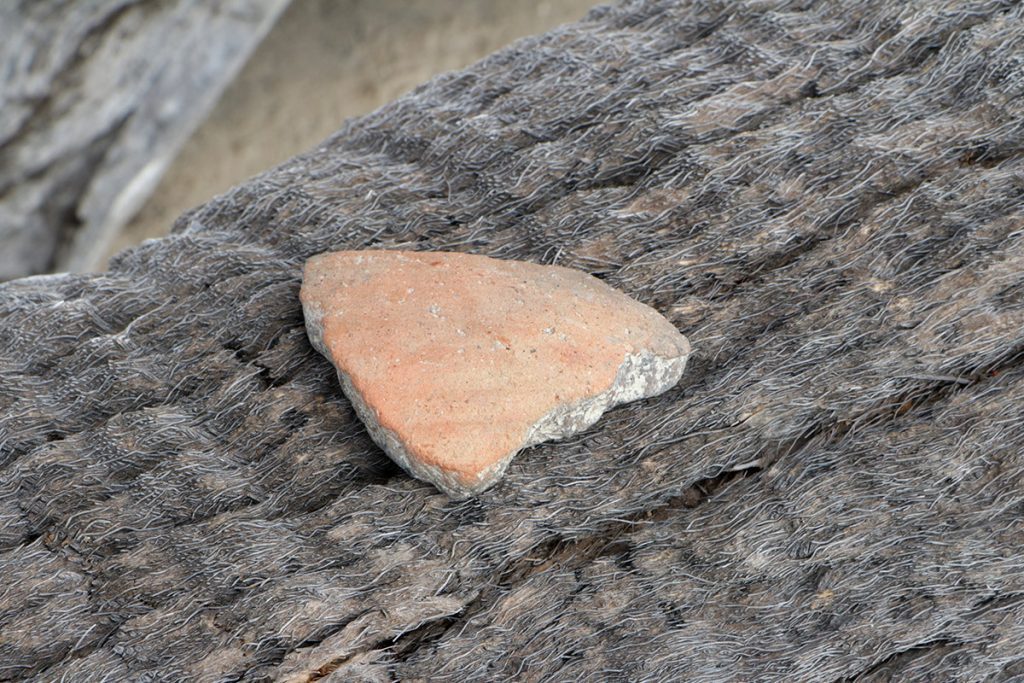
Potshard resting on a fallen palm tree. Saint Vincent Island is home to potshards and oyster middens dating back thousands of years.
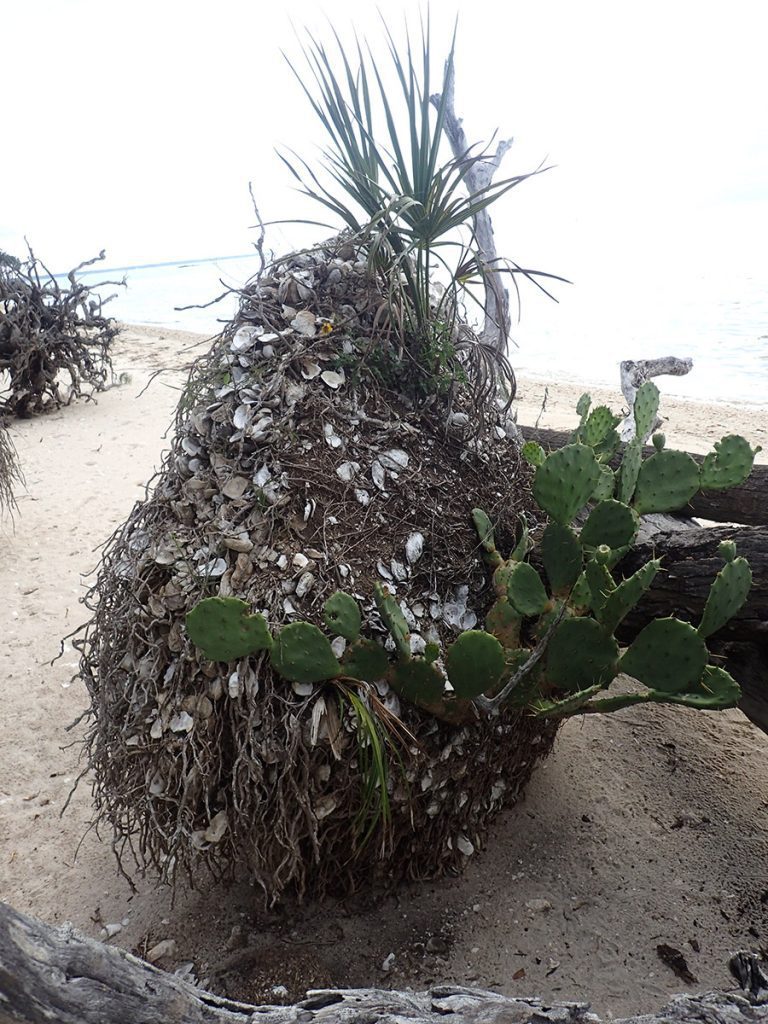
When this palm tree eroded from the shoreline, it took with it surrounding plant life. So far, the cacti, palmetto, and flower seem to be surviving.
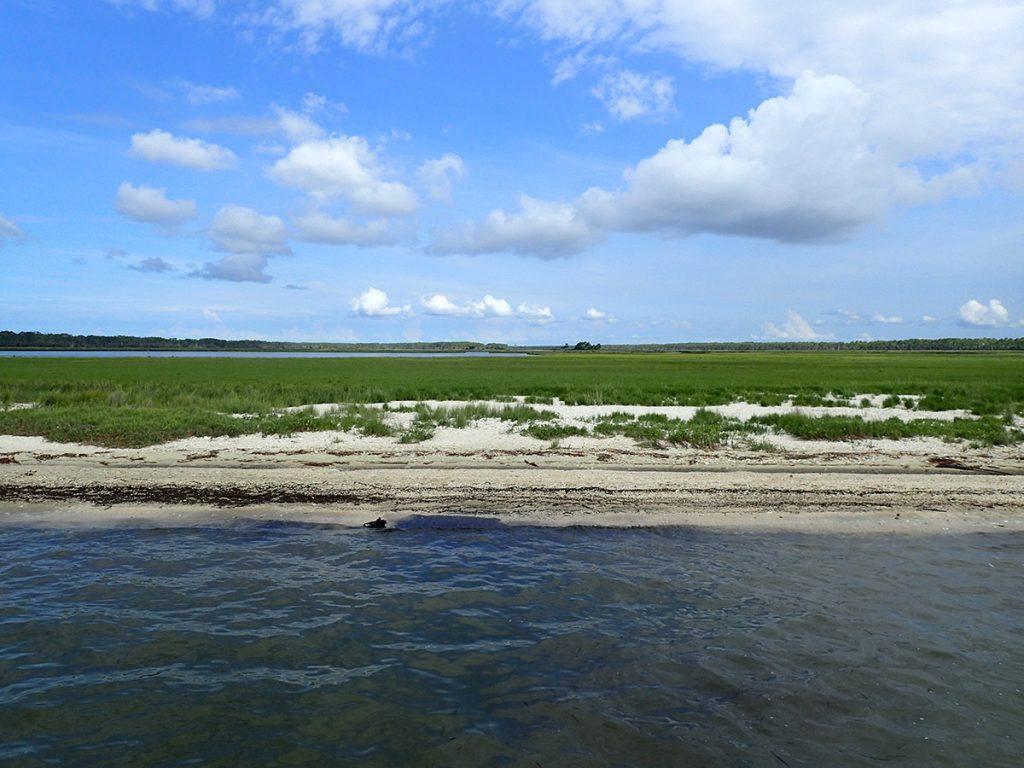
While trees have eroded from St. Vincent, sand is encroaching on its salt marshes, smothering an important estaurine ecosystem.

